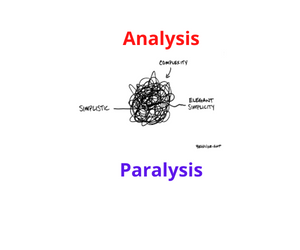Discuss. That would be the one word added to that sentence if this were a school exam paper. In the spirit of answering questions and exam season, this week’s post looks at the money that is wasted by banks, because they don’t get the basics right.
Banks are not consistently effective; a Guardian article last week highlighted how British banks account for about 25% of the #252 billion, yes, billion, in conduct fines paid by the world’s top 20 banks in the last five years. Yes, five years.
Banks are not efficient either. A recent CNBC report suggests that the banks have run out of jobs to cut and were now cutting compensation. The report deemed this a sign of efficiency.
Cutting jobs and then pay is simply dealing with the symptoms not the causes. The Banker’s Plumber knows a lot of people who work inside banks and not one of them could not offer up a thick book full of tales of inefficiency and general ineptitude.
So I strongly disagree with having the words efficiency and banks in the same sentence. Banks have very poor processes and rarely, if ever, get around to doing the basics right.
My bet is that even a Tier II Investment Bank is spending $20 million per year more than it needs to on just one topic; liquidity reserves. Let’s try one simple test for Treasurers, CFO’s and COO types only:
- Does your bank group have multiple legal entities?
If “No”, then “stop right there”. You are a lucky person. Just for giggles you might want to read the rest of this post to understand the pain your peers are suffering.
If “Yes”, advance to question 2.
- Do these entities have a lot of transactions between them, so called inter-company transactions?
If “No”, and on checking, you are really sure, then “stop right there”. You are a lucky person. Just for giggles you might want to read the rest of this post to understand the pain your peers are suffering.
If “Yes”, advance to question 3.
- Do you fully understand the processes for the settlement of those transactions, in particular any cash flows?
If “Yes”, please contact Arthur Daley at the Winchester Club, who will make you a very good price for the ocean going vessel below.
If “No”, read on.
Liquidity Costs Hurt – a real case study
Names changed, simply with the hope that readers focus on the facts and not on whether they think they don’t have the same issues.
No Angel Bank is a tier II IB in the top quartile of FX players.
In FX
It is a direct Settlement Member in CLS. It actively uses standard front-office utilities such as NetLink and Harmony from Traiana. It has used its off-the-shelf CLS processing platform to internally net many FX trades between about a half dozen of its legal entities. It even processes non-CLS FX inter-company trades on that same engine in a number of non-CLS currencies. Some 40% of the volume on that platform is inter-company. This is all very high volume, virtually zero touch processing. Per ticket Operations costs are below $0.05 per trade.
In other products
It uses its offshore operations team to manually bi-laterally net other inter-company cash flows. There are separate efforts for FX related business and other derivatives. A manual effort, but labour is cheap; some $30 per hour, fully loaded.
All in all No Angel Bank would seem to be quite efficient. Nobody is driving hard for any further process optimisation. Then the Treasurer decides he needs to allocate the costs for intraday liquidity; the reserves specifically needed to ensure the day’s obligations can be met. In volume terms this is very roughly 10% of gross cash paid out. This runs into the low double digit billions for Angel Bank at a cost of between $100 and $120 million per year.
Those costs are allocated out to businesses, with share of payment volume the key to who pays what. One very big slice of that cost cake lands in the lap of the COO for FX. The COO is well informed about his operational processes and knows all the facts cited above. But, the $20 million charge is a big dent in annual P&L. Are they doing the right things and are they doing those things right?
A deep dive into actual cash movements
No Angel Bank has some very good data on its daily cash movements. Forced by the PRA to report on Intraday Liquidity Monitoring (see BCBS 248), it is already collecting real time data on actual movements intraday and matching these to expected movements.
Not wanting to “boil the ocean”, detailed analysis started with just one day’s actual movements. Two key observations emerge:
Macro: Even with the CLS processes in FX and the bi-lateral netting mentioned above, some ⅓rd of all the cash moving is inter-company, i.e. between two left hands of the firm. Banks only have left hands.
Micro: looking at one particular entity pair revealed how ineffective and inefficient the processes actually are. On that day, there was activity in 9 currencies between the two. So in a perfect world, 9 would be the minimum and the optimum number of cash movements. Now, if we allow for some timing issues, we might be generous and say 12 was the target. How many movements were made? Just over 60. 5x the optimal number. In terms of actual cash, in one currency Entity A paid B some $250 million, which could have impacted A’s intraday overdraft and with that its liquidity buffer. The same day, B paid A some $600 million, which affected B’s intraday overdraft and with that its liquidity buffer.
Lessons Learned: No Angel Bank was incurring avoidable costs on two fronts.
Firstly, transaction costs paid to the nice folk at the global transaction banks for Nostro services; the usual suspects of JP Morgan, Barclays, HSBC, Citi, Deutsche et al. In this case, about $500k each year in avoidable Nostro transaction costs. For an IB, that is a small number.
More impressive was the potential impact on liquidity costs. Now cause and effect is an imperfect science, but with that said, the potential here was in the order of magnitude of $20 million per year. Even the Treasury controllers thought this was realistic.
$500k was actually enough to pay for the project and development work to enforce one single settlement standard for all inter-company cash flow. This will be achieved with some custom work to the off-the-shelf CLS platform. Break even in one year with a free call option on that potential $20mm.
No Angel Bank is really pretty efficient in FX specifically and inter-company netting generally. Yet, they did not have to dig deep to find room for improvement. They found all this potential in under 3 man months of effort.
Chorus: “Banks are neither efficient nor effective. Let’s get back to basics”
For more insight on the analysis and the potential solution, please contact me directly: olaf.ransome@3cadvisory.com
Previous Posts
Are available on the 3C Advisory website, click here.
Publications
The Bankers’ Plumber’s Handbook
How to do Operations in an Investment Bank, or not! Includes many of the Blog Posts, with the benefit of context and detailed explanations of the issues. True stories about where things go wrong in the world of banking. Available in hard copy only.
Cash & Liquidity Management
An up to date view of the latest issues and how BCBS guidance that comes into force from Jan 1 2015 will affect this area of banking. Kindle and hard copy.
Hard Copy via Create Space: Click here
Amazon UK: Click here
Amazon US: Click Here
Thanks for your support.
Share on:




